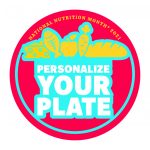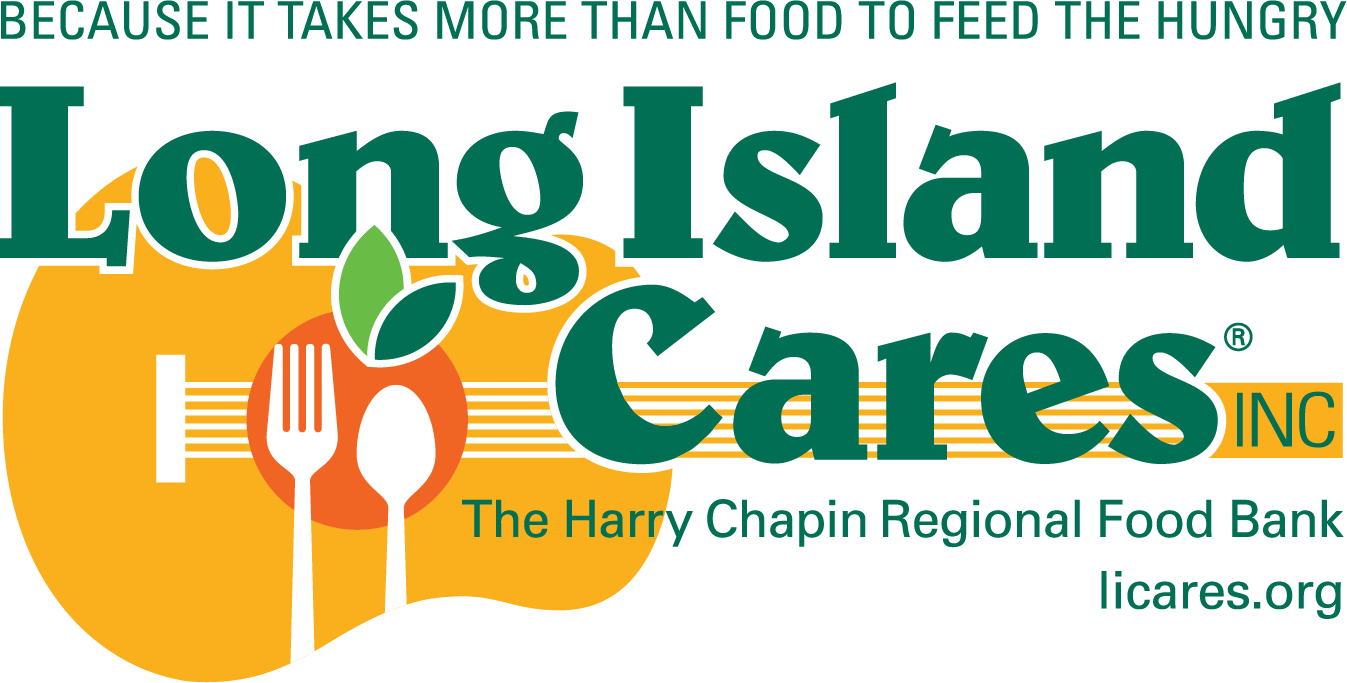March is National Nutrition Month®.
This issue is all about healthy eating.
In this issue: Cooking Basics:Beets | Mashed Rutabagas and Turnips | Filling a Balanced Plate
Sitting down to eat a meal with your family, friends or neighbors is not always easy when you have a busy schedule. However, making time for shared meals is a good way to improve your overall health and wellness.

Time to talk. Sharing a meal is a great chance to share stories and connect with others. It can help boost your mood and build stronger relationships with friends, family and neighbors. Mealtime is also a good opportunity to think and talk about the events of the day and to set goals for the next day or week.
Make healthy habits. Sitting down at a table to eat, rather than eating on the go or in front of the television, allows you to enjoy the food you are eating and makes you less likely to overeat. Eating meals with children is a great chance for kids to learn healthy eating. Children who spend mealtime with trusted adults are more likely to adopt healthy habits like eating more fruits and vegetables.
Set a regular mealtime. Make regular mealtimes a part of your daily routine. If you eat meals at about the same time every day, you will be less likely to get hungry between meals. Set a time, and do your best to stick to it. This will help you make mealtime a part of your daily routine.
Cooking Basics: Beets
Cooking earthy beets makes them taste sweet. Try cooking beets in the microwave or oven. Whole beets can take a long time to cook. Peel and chop beets to reduce cook time. Small beets have thinner skin than larger beets. There is no need to peel small beets. Wash well before cooking.
Microwave Steamed Beets

Preparation time: 10 minutes | Cook time: 5 minutes
Ingredients:
- 2 cups beets, peeled and chopped
- 1 tablespoon water
Directions:
- Add beets and water to a microwave-safe dish. Cover with a lid, damp paper towel or plastic wrap.
- Cook for 5 minutes.
Makes 4 servings
Make ‘quick-pickled’ beets by adding 2 tablespoons vinegar, ¼ teaspoon pepper and ⅛ teaspoon salt to cooked beets.
Oven Steamed Beets
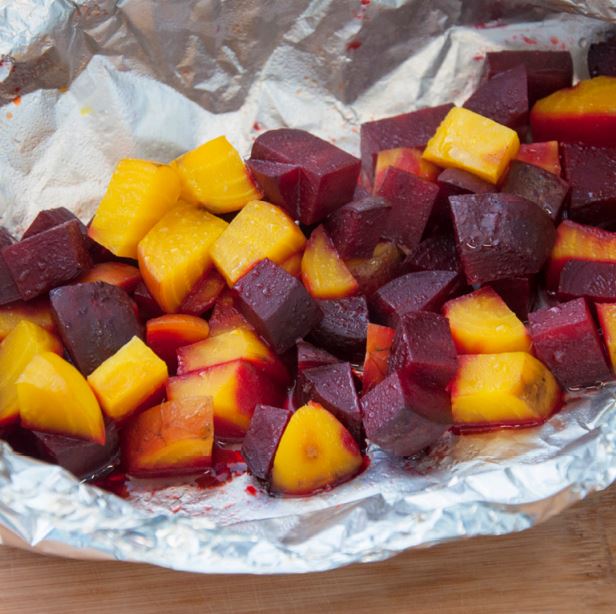 Preparation time: 10 minutes | Cook time: 25 minutes
Preparation time: 10 minutes | Cook time: 25 minutes
Ingredients:
- 2 cups beets, peeled and chopped
- 1 teaspoon oil
- ¼ teaspoon salt
Directions:
- Preheat oven to 400°
- Add beets, oil and salt to bowl. Stir to mix.
- Wrap beets in aluminum foil. Place on a baking sheet.
- Cook for 25 minutes.
Makes 4 servings
Don’t have aluminum foil? Spread chopped beets on a baking sheet and roast for 30 minutes. Beets will shrink as they cook.
Three things to do with cooked beets:
- Enjoy cooked beets, warm or cold, as a salad topping. Beets taste great with vegetables like broccoli, carrots and onions and protein foods like hardboiled eggs or grilled chicken.
- Season cooked beets and enjoy as a side dish. Toss 2 cups warm beets with 2 tablespoons orange juice, 1 tablespoon vinegar, 1 tablespoon oil and ⅛ teaspoon salt.
- Instead of potato home fries, make beet home fries. Add 1 teaspoon oil to a skillet over medium heat. Add 2 cups cooked beets and ½ cup chopped onions. Cook until beets and onions start to brown, about 10 minutes. Season with 1 teaspoon garlic powder and ½ teaspoon black pepper.
Mashed Rutabagas or Turnips
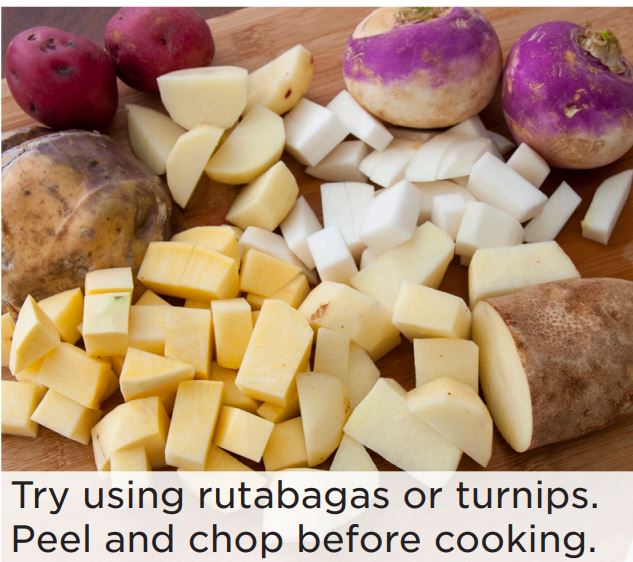
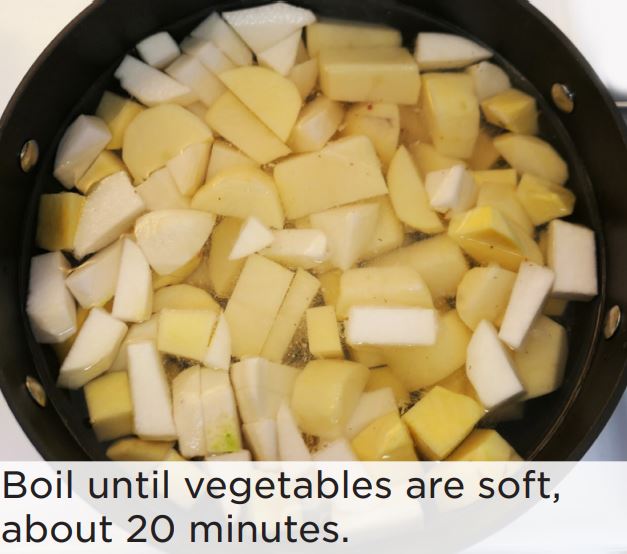

Preparation time: 10 minutes | Cook time: 30 minutes | Cost: $3.25
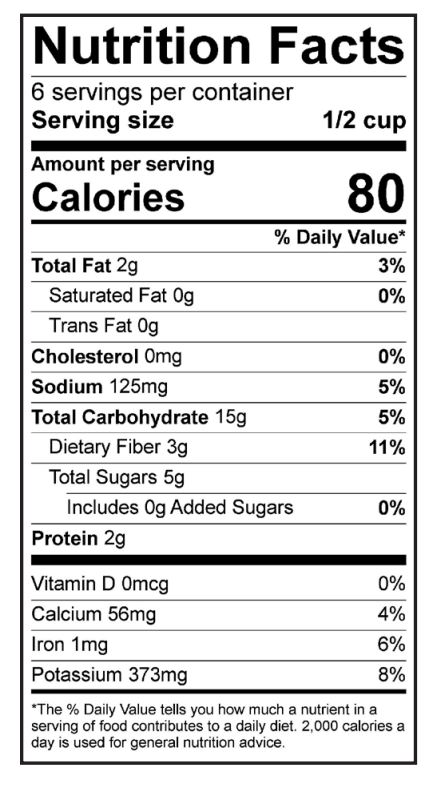 Ingredients:
Ingredients:
- 4 cups rutabaga or turnips, peeled and chopped
- 2 cups potatoes, peeled and chopped
- 4 cups water
- ½ cup low-fat milk
- 2 teaspoons oil
- ½ teaspoon garlic powder
- ¼ teaspoon black pepper
- ⅛ teaspoon salt
Directions:
- Peel and chop rutabaga or turnips and potatoes.
- Add chopped vegetables and water to a large pot with a lid. Bring to a boil over medium-high heat.
- When the water boils, reduce heat to medium-low and cover with lid. Simmer for 20-25 minutes.
- Drain boiled vegetables.
- Add drained vegetables back to the pot.
- Add milk, oil, garlic powder, black pepper and salt to a microwave-safe container. Stir to mix. Microwave for 1 minute.
- Add the warm milk mixture to the boiled vegetables. Mash with a fork or potato masher.
Makes 4 servings



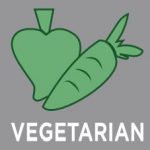


Personalizing a Balanced Plate
Eating a balanced diet can be easier when you know how to fill your dinner plate. MyPlate is a tool to
help you fill your plate with a variety of healthy foods. Eating foods from different food groups can help
you get all of the nutrients that you need to stay healthy. Here are some tips to help you fill a healthy plate:
- Vary your veggies. Different vegetables have different vitamins and minerals, so try to eat a variety of colorful vegetables. Fresh, frozen or canned vegetables can be a tasty addition to soups, salads or main dishes.
- Make half your plate fruits and vegetables: Focus on whole fruits. Enjoy a rainbow of different colorful fruits to get the nutrients you need. When you can, choose fruits that are less processed like fresh, frozen or canned fruit packed in water or 100 percent juice. Fruit is naturally sweet. Try enjoying fruit as a snack or dessert.
- Make half your grains whole grains. Whole grains are a good source of fiber and other nutrients. Choose breads, cereals and pasta that list a whole grain as the first ingredient. Try brown rice as a whole grain substitute for white rice.
- Move to low-fat or fat-free milk or yogurt. Low-fat or fat-free cheese, milk and plain yogurt are great dairy options. Choose one percent milk when you can, in place of two percent milk or whole milk. If you cannot drink milk, choose fortified soymilk. Fortified soymilk is a good source of nutrients found in milk like protein, calcium and vitamin D.
- Vary your protein routine. Choose lean meats and fish like skinless chicken and turkey. Try grilling, broiling or baking to cook lean meat and fish without adding extra fat. Canned fish like salmon and tuna are also good sources of protein. Protein is also found in foods like eggs, nuts, beans and legumes.
For more information on healthy eating, visit choosemyplate.gov.
For more information on National Nutrition Month 2021 visit
https://www.eatright.org/food/resources/national-nutrition-month

